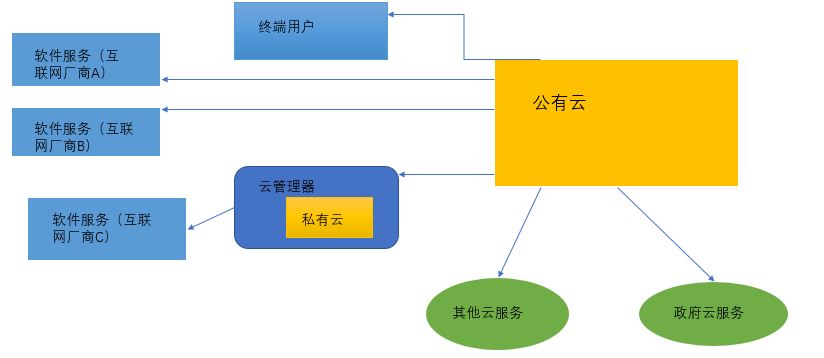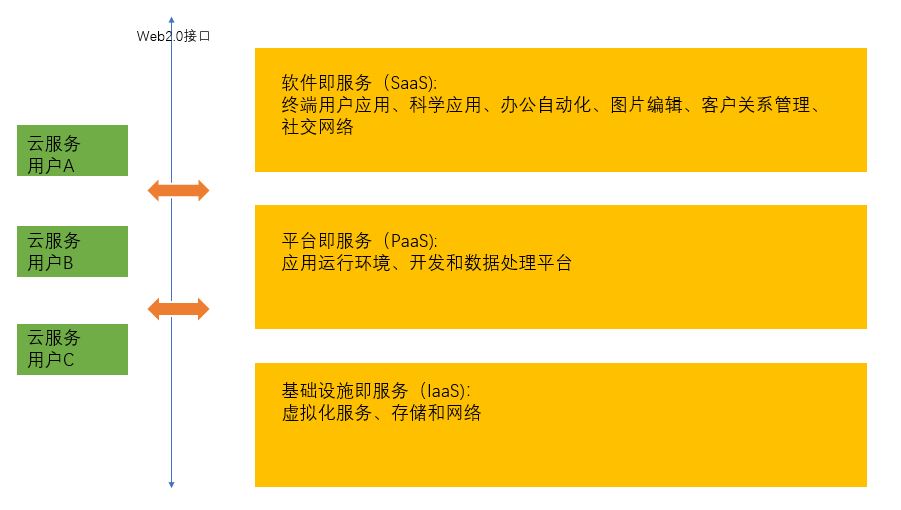In the traditional computing model, the major Internet companies to support the operation of the server via a local network resources. For some of the larger Internet companies, it will build its own data center, the physical equipment and facilities to distinguish local, to support the operation of the server via remote call and remote deployment. Along with parallel computing and distributed computing development, from a small number of network service providers to build the appropriate physical facilities and software facilities, we are not in the position to provide customers with different computing resource model became possible. My personal understanding, in the original vendors, each vendor must purchase their own physical device, and then configure the software to provide computing support for his family's business, and now, some of the more wealthy, relatively high technical level built himself a very large pool of computing resources, then the pool of resources according to the needs of customers distributed to a number of smaller clients then charge accordingly. Cloud computing model is one such an implementation of computing resources subscription service.


Cloud computing means based service delivery model. Simply put, cloud computing will configure complex network infrastructure and data center operation and maintenance aspects of the abstract became available on demand service delivery. The advantages of cloud computing is to avoid the complexity of the scene when the traditional maintenance of network equipment and expand server computing resources, making the network service vendors can focus on their application development and maintenance, rather than spending a lot of time to research and configure the network infrastructure. Cloud computing is a network service vendors expand their computing resources provide convenient, saving of human resources and network resources. Cloud computing drawback: Cloud computing enables deployment of critical network resources and servers running the final rests in the hands of others. In other words, cloud computing resources as a public network infrastructure is controlled by a small number among the giants, exacerbated by resource monopoly in the Internet industry, also means that the use of cloud computing services firms subscribe to services that could be part of big business affect internal operations. On the other hand, the stability of the resources under the cloud computing model provided by some manufacturers will be challenged, and once an accident occurs, the manufacturer will bear the cost of a subscription service unacceptable, especially for some of the traditional financial sector even more so .
尽管云计算存在种种风险,但不容置疑的是云计算正在成为一种主流的计算资源的提供方式,这种趋势还在不断增强。 现在我借用美国国家标准与技术研究院(NIST)关于云计算的定义:云计算是一种能够便捷地按需访问共享可配置计算资源池(如网络、服务器、存储、应用、服务)的服务模式,并只需很少的管理工作或与服务提供商很少的交互就可以提供和分布这些服务。
云计算具有两个重要特征,其中之一是一切皆服务,系统的不同组件——IT基础设施、开发平台、数据库等都可以作为服务来交付、定量和定价。而另一项特征是面向效用,也就是说云服务提供商按照资源的使用情况来收费,有效地避免了网络计算资源的浪费。一般来说,云计算服务必须具有以下特点:一、可通过浏览器或Web服务应用程序接口(API)访问服务;二、不需要先期投入;三、按资源使用量付费。
云计算部署和访问模式包括三种:公共云、私有云/企业云和混合云。
公共云/网络云:第三方,多用户基础设施和服务;可订阅模式;
私有云/企业云:企业拥有的数据中心和基础设施公共云模型,向内联网用户以及合作伙伴提供服务
混合云/互联云:混合使用私有云和公有云;当私有云容量不足时,租赁公共云服务
云计算参考模型将云计算服务分为三大类:基础设施即服务(IaaS),平台即服务(PaaS),软件即服务(SaaS).

IaaS按需求提供虚拟化资源,如硬件、存储和网络,PaaS能够根据需要提供可扩展的、弹性的运行环境,执行用户的应用程序,SaaS按需提供应用程序和服务。云计算参考模型的每一层都为用户提供了不同的服务。
此外,云计算也面临着一些挑战,其中既包括系统配置、网络和规模等实际问题,还包括云环境下的安全性、保密性以及数据的保护等问题,甚至还涉及到法律问题。不过,目前主流的云服务在这些方面已经实现了某些成就,这使得云服务的普及成为可能。伴随着云计算的持续发展,一个云时代实际上已经到来!